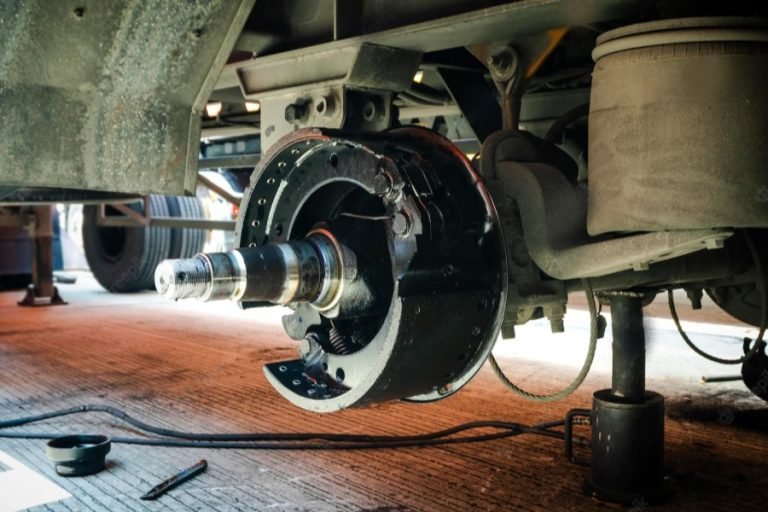
Drive Shaft Repair: Keeping Your Wheels Turning Smoothly
The drive shaft, often referred to as the prop shaft, is a critical component in your vehicle’s drivetrain. It’s the unsung hero, responsible for transmitting the power generated by your engine to the wheels, enabling you to move forward. When this vital part malfunctions, the consequences can range from inconvenient vibrations to complete vehicle immobilization. Understanding the intricacies of the drive shaft and recognizing the signs of potential problems is crucial for every vehicle owner. This article delves into the world of drive shafts, explaining their function, common issues, and, most importantly, how to secure drive shaft repair services and get a free quote to get you back on the road.
Understanding the Drive Shaft’s Role
The drive shaft’s primary function is to transfer rotational power from the transmission to the differential, which then distributes that power to the wheels. This seemingly simple task is actually a complex engineering feat. The drive shaft must withstand immense torque, or twisting force, especially during acceleration and when carrying heavy loads. Furthermore, it must accommodate the constant changes in angle between the transmission and the differential as the vehicle moves over uneven terrain. This is achieved through the use of universal joints (U-joints) or constant velocity joints (CV joints), which allow the drive shaft to flex while still transmitting power.
Common Drive Shaft Problems and Their Symptoms
Several factors can lead to drive shaft issues, including wear and tear, damage from road hazards, and insufficient lubrication. Recognizing the symptoms early can prevent further damage and costly repairs. Here are some of the most common problems and their associated warning signs:
- Vibrations: One of the most noticeable symptoms of a drive shaft problem is vibration, especially at higher speeds. This can be felt throughout the vehicle, often originating from the floorboards. The severity of the vibration can vary depending on the nature of the problem.
- Clunking Noises: A clunking sound, particularly when accelerating or decelerating, can indicate worn U-joints or CV joints. This noise is often more pronounced when shifting gears.
- Squealing or Grinding Sounds: These sounds may indicate a lack of lubrication or damage to the bearings within the U-joints or CV joints. This often occurs when the grease dries up or is contaminated.
- Difficulty Turning: Problems with the drive shaft can sometimes manifest as difficulty turning, especially when making tight turns.
- Excessive Play: If you can feel excessive play or looseness in the drive shaft when you try to rotate it by hand, this is a clear indication of a problem.
- Visual Damage: Inspect the drive shaft for any visible signs of damage, such as dents, rust, or leaks of grease. Damaged boots on CV joints can also lead to problems.
The Importance of Timely Drive Shaft Repair
Ignoring drive shaft problems can lead to a cascade of issues, resulting in more extensive and expensive repairs down the line. A malfunctioning drive shaft can put undue stress on other components of your vehicle’s drivetrain, leading to premature wear and tear. Furthermore, a failing drive shaft can potentially cause a complete loss of power, leaving you stranded and vulnerable. Addressing issues promptly not only saves you money but also ensures your safety and the safety of other road users. Regular maintenance and prompt attention to any warning signs are essential for preventing costly repairs.
The Drive Shaft Repair Process
Drive shaft repair typically involves a thorough inspection of the entire system to identify the source of the problem. This may include checking the U-joints or CV joints for wear and tear, inspecting the drive shaft itself for damage, and assessing the condition of the bearings and seals. The repair process can vary depending on the specific issue, but common procedures include:
- U-Joint or CV Joint Replacement: This is the most common type of drive shaft repair. Worn or damaged U-joints or CV joints are removed and replaced with new ones.
- Drive Shaft Replacement: In cases of severe damage, the entire drive shaft may need to be replaced.
- Balancing: After any repair or replacement, the drive shaft must be properly balanced to eliminate vibrations.
- Lubrication: Proper lubrication of the joints is essential for their longevity.
Professional mechanics have the specialized tools and expertise to diagnose and repair drive shaft issues accurately and efficiently. Attempting to repair a drive shaft yourself without the proper knowledge and equipment can be dangerous and may lead to further damage.
Finding a Reliable Drive Shaft Repair Service
When it comes to drive shaft repair, choosing a reputable and experienced service provider is paramount. Here’s what to look for:
- Experience and Expertise: Look for a shop with a proven track record in drive shaft repair. Ask about their technicians’ experience and certifications.
- Quality Parts: Ensure the shop uses high-quality replacement parts.
- Warranty: Inquire about the warranty offered on the repair work and parts. A good warranty indicates the shop’s confidence in its work.
- Customer Reviews and Testimonials: Check online reviews and testimonials to get an idea of other customers’ experiences with the shop.
- Transparent Pricing: A reputable shop will provide a clear and detailed estimate before starting any work. This is your chance to get a free quote.
How to Get a Free Quote for Drive Shaft Repair
Getting a free quote for drive shaft repair is a straightforward process. Most reputable auto repair shops offer free estimates. Here’s how to get one:
- Contact Local Repair Shops: Call or visit several auto repair shops in your area.
- Describe the Symptoms: Clearly explain the symptoms you’re experiencing, such as vibrations, noises, or any other issues.
- Provide Vehicle Information: Provide the make, model, and year of your vehicle.
- Schedule an Inspection: Schedule an appointment for an inspection so the mechanic can accurately diagnose the problem.
- Receive the Quote: After the inspection, the shop should provide you with a detailed quote outlining the necessary repairs and the associated costs. This is where you get your free quote.
Comparing quotes from multiple shops is a good practice to ensure you’re getting a fair price. Don’t solely focus on the lowest price; consider the shop’s reputation, experience, and the quality of parts used.
Preventative Measures to Prolong Drive Shaft Life
While drive shaft repair is sometimes unavoidable, taking preventative measures can significantly extend the life of your drive shaft and reduce the likelihood of future problems:
- Regular Lubrication: If your vehicle’s drive shaft has grease fittings, ensure they are lubricated according to the manufacturer’s recommendations.
- Regular Inspections: Have your drive shaft inspected regularly as part of your routine vehicle maintenance.
- Avoid Excessive Stress: Avoid putting excessive stress on your drive shaft, such as by towing heavy loads beyond your vehicle’s capacity or driving aggressively over rough terrain.
- Inspect CV Joint Boots: Regularly inspect the CV joint boots for cracks or tears. Replace damaged boots promptly to prevent grease leakage and contamination.
The Bottom Line on Drive Shaft Repair
The drive shaft is a critical component that demands your attention. Recognizing the symptoms of drive shaft problems, seeking timely repairs, and taking preventative measures can save you time, money, and potential headaches. Don’t ignore the warning signs; get a free quote from a reputable auto repair shop today and keep your vehicle running smoothly. Prioritizing drive shaft repair is an investment in your vehicle’s longevity and your peace of mind.
[See also: How to Diagnose Car Vibrations, Common Car Noises and What They Mean, Understanding Your Car’s Drivetrain]

